Editorial board
Editors of this journal work on a purely voluntary basis without remuneration in line with the not-for-profit philosophy of the EGU.
Executive editors

Jean Dumoulin
Université Gustave Eiffel
Laboratory
Components and Systems (COSYS)
Laboratory
Components and Systems (COSYS)
France

Anette Eltner
Dresden University of Technology
Insitute of Photogrammetry and Remote Sensing
Department of Geosciences
Insitute of Photogrammetry and Remote Sensing
Department of Geosciences
Germany
Francesco Soldovieri
Istituto per il Rilevamento Elettromagnetico dell’Ambiente, Consiglio Nazionale delle Ricerche
Italy
Håkan Svedhem
Technical University Delft
Aerospace Engineering
Planetary Exploration
Aerospace Engineering
Planetary Exploration
Netherlands
Associate editors
Antonio Annis
University For Foreigners of Perugia
WARREDOC
WARREDOC
WARREDOC
WARREDOC
Italy
Ciro Apollonio
Tuscia University
Department of Agriculture and Forestry Sciences (DAFNE)
Department of Agriculture and Forestry Sciences (DAFNE)
Italy
David Barclay
Dalhousie University
Oceanography
Oceanography
Canada
Andrea Benedetto
University ROMA TRE
Department of Civil, Computrer Science and Aeronautical Engineering
Department of Civil, Computrer Science and Aeronautical Engineering
Italy
Xabier Blanch Gorriz
Universitat Politècnica de Catalunya
Department of Civil and Environmental Engineering
Department of Civil and Environmental Engineering
Spain
Stephen Cohn
Colorado Department of Transportation
Office of Applied Research
Office of Applied Research
United States
Marina Díaz-Michelena
INTA
Space Programs & Space Sciences
Space Programs & Space Sciences
Spain

Jean Dumoulin
Université Gustave Eiffel
Laboratory
Components and Systems (COSYS)
Laboratory
Components and Systems (COSYS)
France

Anette Eltner
Dresden University of Technology
Insitute of Photogrammetry and Remote Sensing
Department of Geosciences
Insitute of Photogrammetry and Remote Sensing
Department of Geosciences
Germany
Lev Eppelbaum
Tel Aviv University
Geophysics
Geophysics
Israel
Alessandro Fedeli
University of Genoa
DITEN
Department of Electrical, Electronic, Telecommunications Engineering, and Naval Architecture (DITEN)
DITEN
Department of Electrical, Electronic, Telecommunications Engineering, and Naval Architecture (DITEN)
Italy
Maria Genzer
Finnish Meteorological Institute
Space research and observation technologies
Space research and observation technologies
Finland
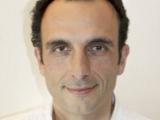
Salvatore Grimaldi
University of Tuscia
DIBAF
DIBAF
Italy

Ari-Matti Harri
Finnish Meteorological Institute
Space Research Division
Space Research Division
Finland
Jyri Heilimo
FMI
Arctic Research
Arctic Research
Finland
Günter Kargl
Space Research Institute / Austrian Academy of Sciences
Planetary Physics
Planetary Physics
Austria
Daniel Kastinen
Swedish Institute of Space Physics
Solar terrestrial and atmospheric research programme
Solar terrestrial and atmospheric research programme
Sweden
Jarmo Koistinen
Finnish Meteorological Institute
Earth Observation
Earth Observation
Finland
Oleg Korablev
Russian Federation
Valery Korepanov
Lviv Center of Institute for Space Research
Lviv Centre
Lviv Centre
Ukraine
Antti Mäkelä
Finnish Meteorological Institute
Weather and Climate Change Impact Research
Weather and Climate Change Impact Research
Finland
Nicola Masini
ISPC - Institute of Heritage SCience
CNR
CNR
Italy
Fernando Nardi
University of Rome Tor Vergata
DICII
Department of Civil Engineering and Computer Science
DICII
Department of Civil Engineering and Computer Science
Italy
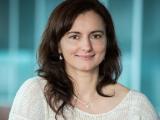
Lara Pajewski
Sapienza University of Rome
Department of Information Engineering, Electronics and Telecommunications
Department of Information Engineering, Electronics and Telecommunications
Italy

Mark Paton
Finnish Meteorological Institute
Finland
Takehiko Satoh
ISAS/JAXA
Dept of Solar System Sciences
Dept of Solar System Sciences
Japan
Walter Schmidt
Finland
Francesco Soldovieri
Istituto per il Rilevamento Elettromagnetico dell’Ambiente, Consiglio Nazionale delle Ricerche
Italy
Ralf Srama
University of Stuttgart
Institute for Space Systems
Institute for Space Systems
Germany
Håkan Svedhem
Technical University Delft
Aerospace Engineering
Planetary Exploration
Aerospace Engineering
Planetary Exploration
Netherlands
Mikko Syrjäsuo
The University Centre in Svalbard
Norway
Hiroyuki Tanaka
University of Tokyo
Earthquake Research Institute
Earthquake Research Institute
Japan
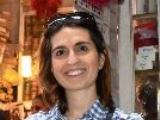
Flavia Tauro
University of Tuscia
Dipartimento per l'Innovazione nei Sistemi Biologici, Agroalimentari e Forestali
Dipartimento per l'Innovazione nei Sistemi Biologici, Agroalimentari e Forestali
Italy

Fabio Tosti
University of West London
Finance Dept
Finance Dept
United Kingdom
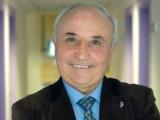
Luis Vazquez
Facultad de Informatica
Departamento de Matematica Aplicada
Departamento de Matematica Aplicada
Spain

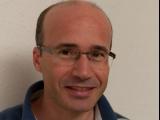
Mehrez Zribi
CNRS
cesbio
cesbio
France


